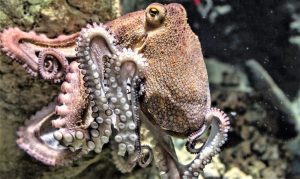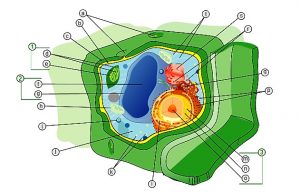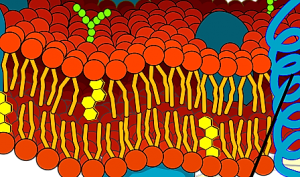Cephalopods
The cephalopods are a small group of highly advanced and organized animals, exclusively marine. Octopus, squid, cuttlefish and nautilus are members of this group. The extinct forms surpass in number those that have remained alive, and as a species, has reached a great diversity at the end of the Paleozoic and Mesozoic. Cephalopods have been among the large dominant predators in the ocean in different moments of geological history.
What are cephalopods?
They are a group of marine mollusks that have a sack with an open space where their head comes out. They are the largest invertebrates on earth and have a series of tentacles.
Although there are currently few species of live cephalopods, they occupy a wide variety of habitats in the oceans. Individual species are often very abundant, and they are seen as main targets for marine fisheries.
Characteristics of the cephalopods
Cephalopods have different characteristics, here are the most important ones.
- All cephalopods are carnivores.
- They have a strong beak located at the entrance to the oral cavity.
- They have two pairs of salivary glands, one of which may be poisonous.
- The digestive tract has three parts: esophagus, stomach, which chews food; and cecum, where greater digestion and absorption occurs.
- The back of the cecum contains a diverticulum which is itself an ink gland, and which is capable of producing a melanin suspension that can be expelled through the mantle cavity.
- Locomotion in cephalopods occurs with a jet propulsion
- Locomotion in other cephalopods can also be achieved through other means such as arms and side wings that help them propel themselves.
- The most important sense they have is that of sight, since they hunt their prey through it.
- Their circulatory system is closed, and they have breathing through gills.
- Some may have two hearts.
Types of cephalopods
The types of cephalopods that exist are the following:
- Tetrabranquial: they have two pairs of gills and there are only three species in the world. They are the only ones that have an external shell, formed by chambers full of gases that facilitate and regulate their flotation. Their eyes are very simple, but they have crystalline and cornea.
- Octopods: they have a pair of gills and eight feet, like octopuses. They have eight tentacles with suckers, no corneal ring, and a rudimentary inner shell. They are bad swimmers, for example, the octopus and the argonaut.
- Decapods: They have a pair of gills and ten feet. They have ten very prehensile tentacles, eight of which are short filled with rows of suckers and two much longer with suckers only at their ends. On the back they have a spongy internal limestone shell. They have a parrot beak and a radula.
Feeding
Cephalopods feed mainly on small mollusks, tiny crustaceans and small fish. Sometimes, when they cannot find food, they have to become scavengers.
Habitat
They inhabit the bottom of the ocean and thus, many of their habitats have not yet been explored. Most of them live in saltwater, although some may live in fresh water. The few cephalopods that manage to adapt to the soil need a lot of moisture to survive.
They can be found throughout the world regardless of the type of zone or the sea zone. Some of them live at the bottom of the ocean and some, approach the coast during spring. They also like to live on sandy and rocky bottoms.
Reproduction
Males have a testicle and a vessel that carries sperm to the seminal vesicle. Females have an ovary and an oviduct with the oviductal gland. Before copulating, they make a previous courtship to realize that they belong to the same family. The male is in charge of transmitting the spermatophores to the female towards the hectocotyli, the copulating organ. At this point, the male introduces the arm into the female’s paleal cavity, and the sperm are then released.
The female’s eggs are deposited in the form of cords on the seabed. After reproduction, the parents die.
Breathing
This type of animal has a gill breathing that is characteristic of beings living in the sea, where there is little oxygen concentration. These gills are located in the paleal cavity and have blood vessels. They can also be single, double or quadruple. The gas exchange occurs when the filaments that have the gills produce water currents that pass over the gills.
Fossils
Cephalopods are quite complicated mollusks and appeared in the Cambrian period, so they arose more than 500 million years ago. The history of their evolution has been well documented since most of the forms had a mineralized shell that was easily preserved in the fossil record. Spain is where most fossils have been found.
Edible cephalopods
Some of the cephalopods that can be used as food sources are the following:
- Squid rings
- Squid
- Squid
- Octopus
- Giant squid
- Sepia
Samples of cephalopod mollusks
The most common are squid, cuttlefish, octopus, belemnoid, nautiloid.
How to cite this article?
Briceño V., Gabriela. (2019). Cephalopods. Recovered on 3 January, 2025, de Euston96: https://www.euston96.com/en/cephalopods/










